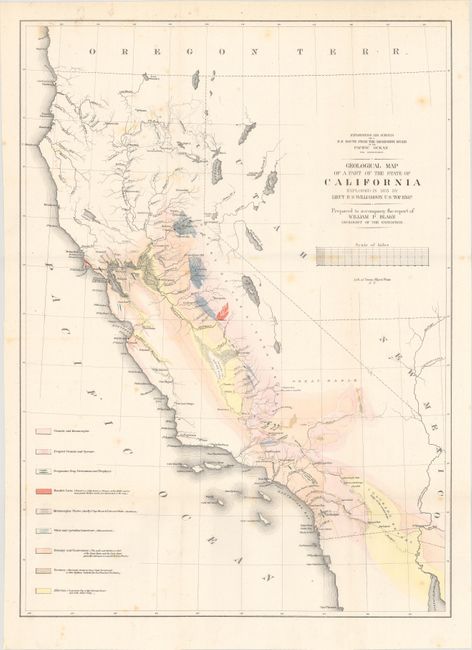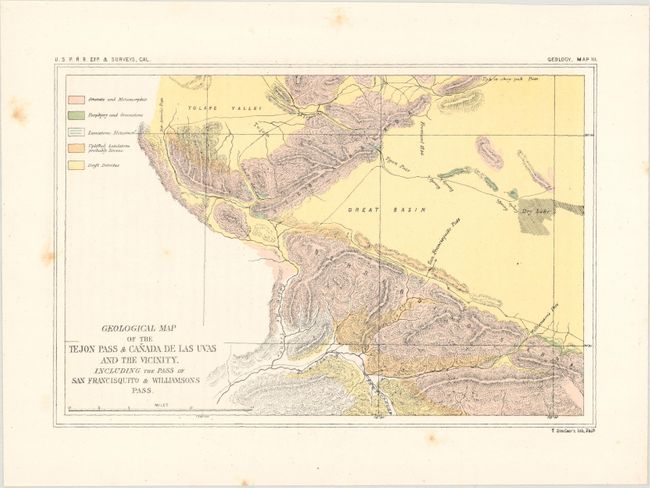Subject: California
Period: 1855 (circa)
Publication: U.S.P.R.R. Explorations and Surveys, Cal.
Color: Hand Color
A. Geological Map of a Part of the State of California Explored in 1853 by Lieut. R.S. Williamson U.S. Top. Engr., (16.1 x 22.1"). A majority of this map of California is colored to reflect geological knowledge and coded in accordance with a legend at the left. The legend identifies nine geological units as mapped by Lieut. R.S. Williamson of the Topographical Engineers. There are interesting details throughout, and especially along the American River. A huge Mono Lake is shown, but not Lake Tahoe; rather, in its place is a small lake named Lake Bonpland. In Southern California, Los Angeles, San Gabriel and San Pedro are located. Interestingly, the water between San Pedro (Long Beach) and San Diego is called "Earthquake Bay." Issued folding.
B. Geological Map of the Country Between San Diego and the Colorado River California, dated 1855 (9.1 x 6.7"). This map defines five geological units named in the legend via hand coloring. Showing the region along the border with Mexico, the map locates San Diego, San Luis Rey, San Juan Capistrano, Los Angeles, San Gabriel, and Agua Caliente. The map also names a Salt Pond, Salt Creek, Soda Springs and a Mud Volcano in Mexico.
C. Geological Map of the Tejon Pass & Canada de las Uvas and the Vicinity. Including the Pass of San Francisquito & Williamsons Pass, (9.3 x 6.2"). Map shows the region to the east of Santa Barbara. Identifies five different geologic types including granite, limestone and sandstone.
References: Marcou & Marcou #676, #678 & #679.
Condition: B+
Light scattered foxing. The map of San Diego also has light toning.




